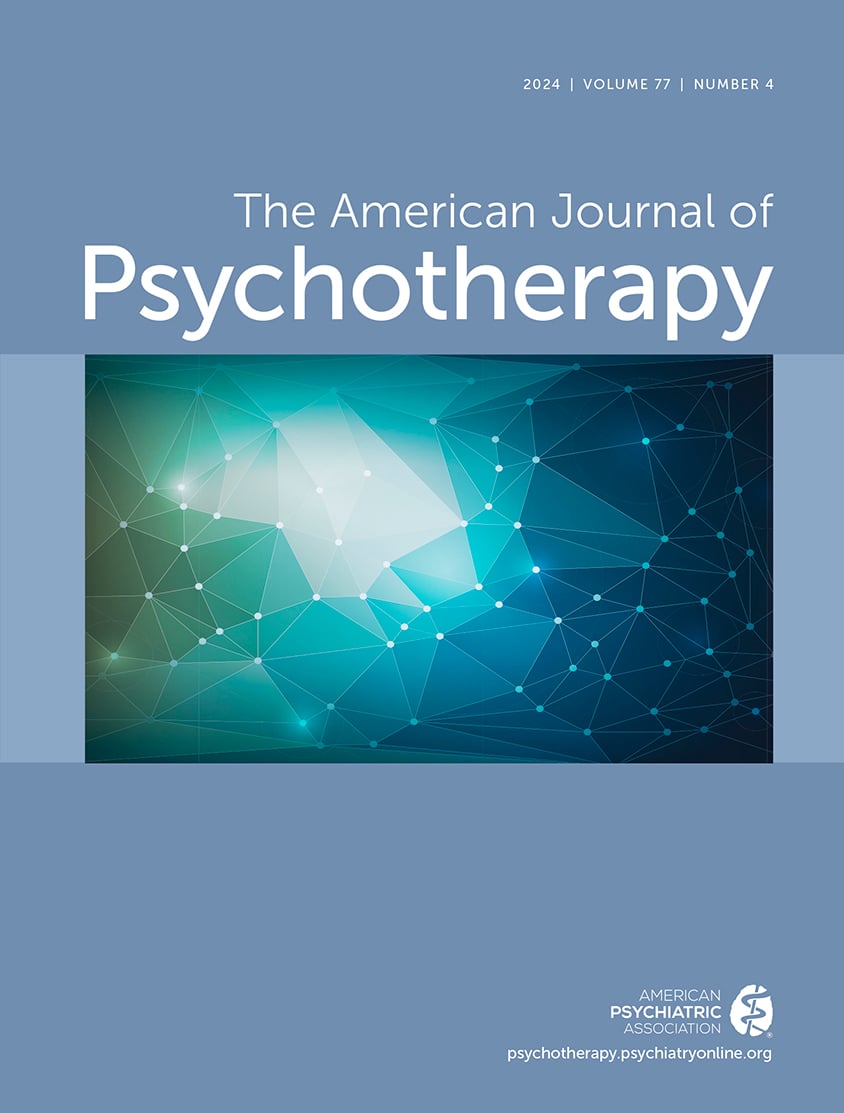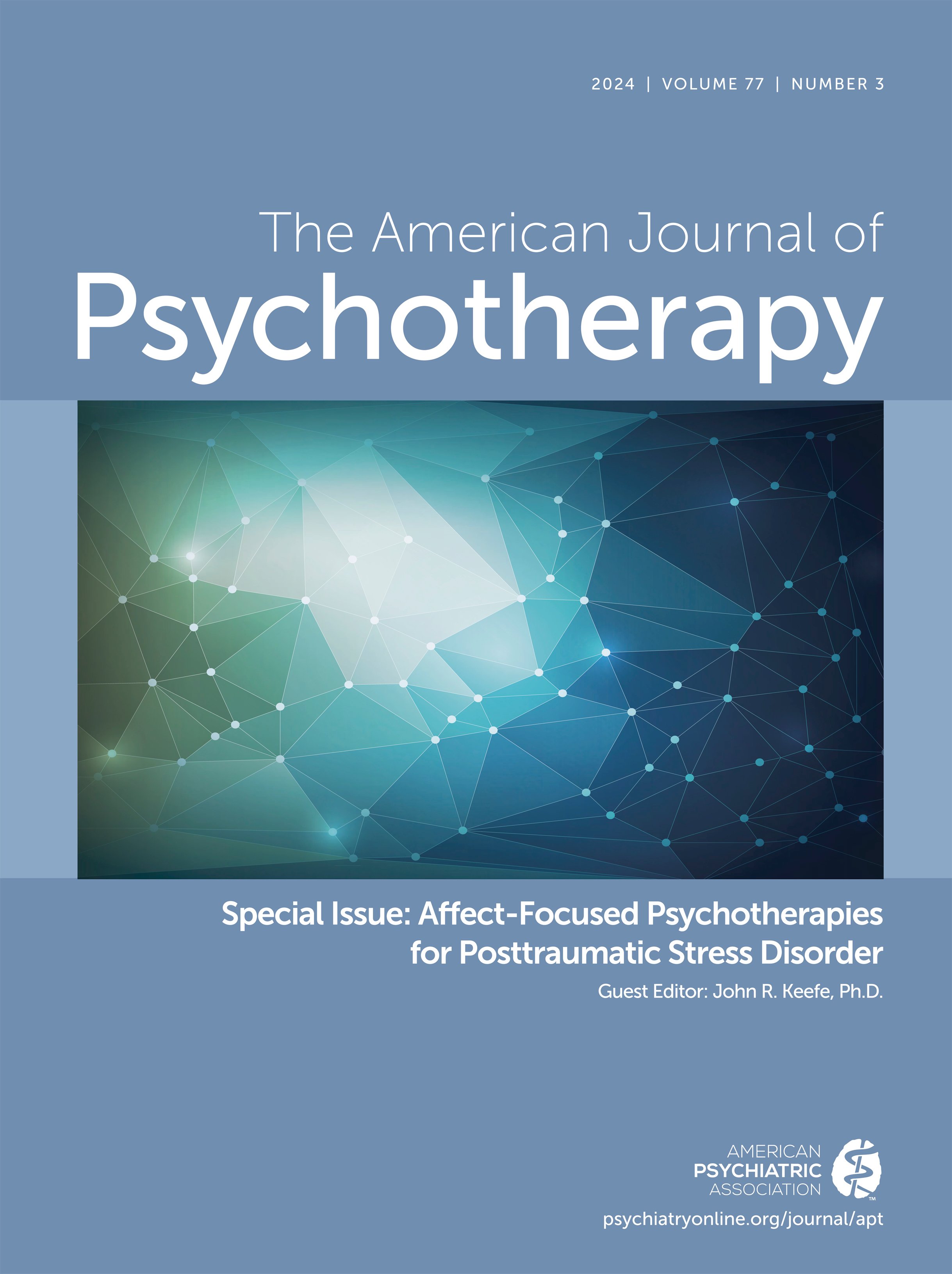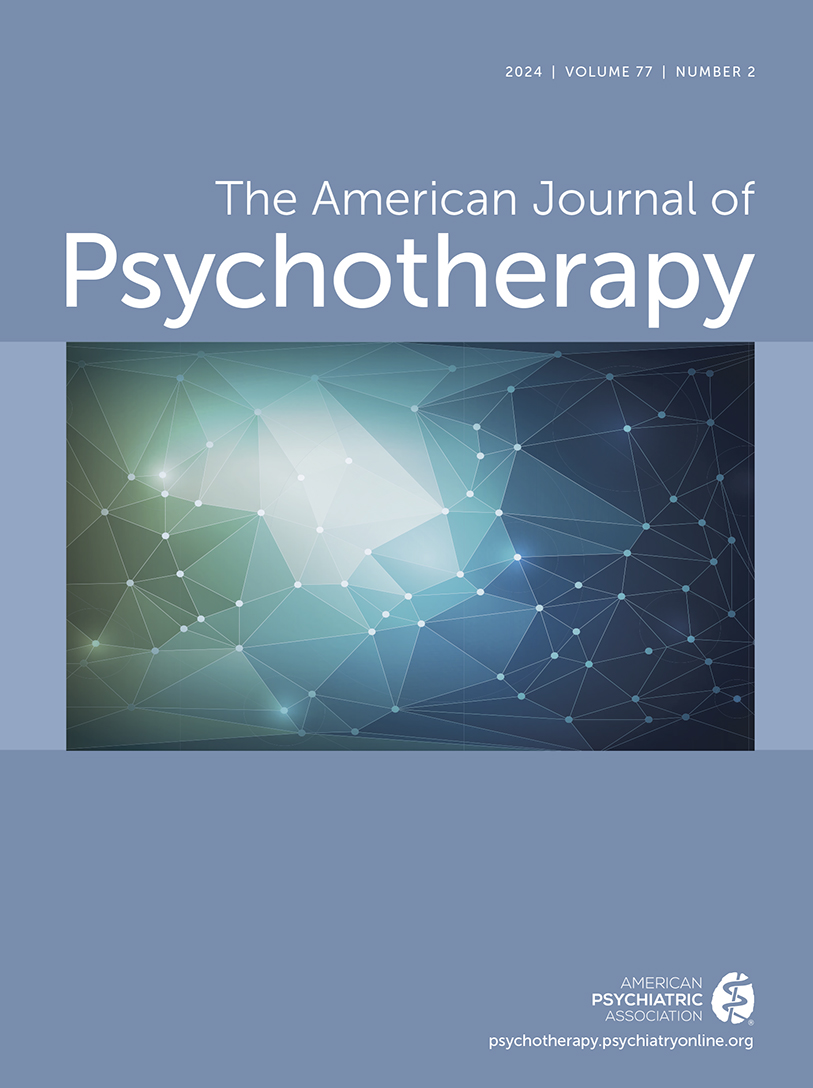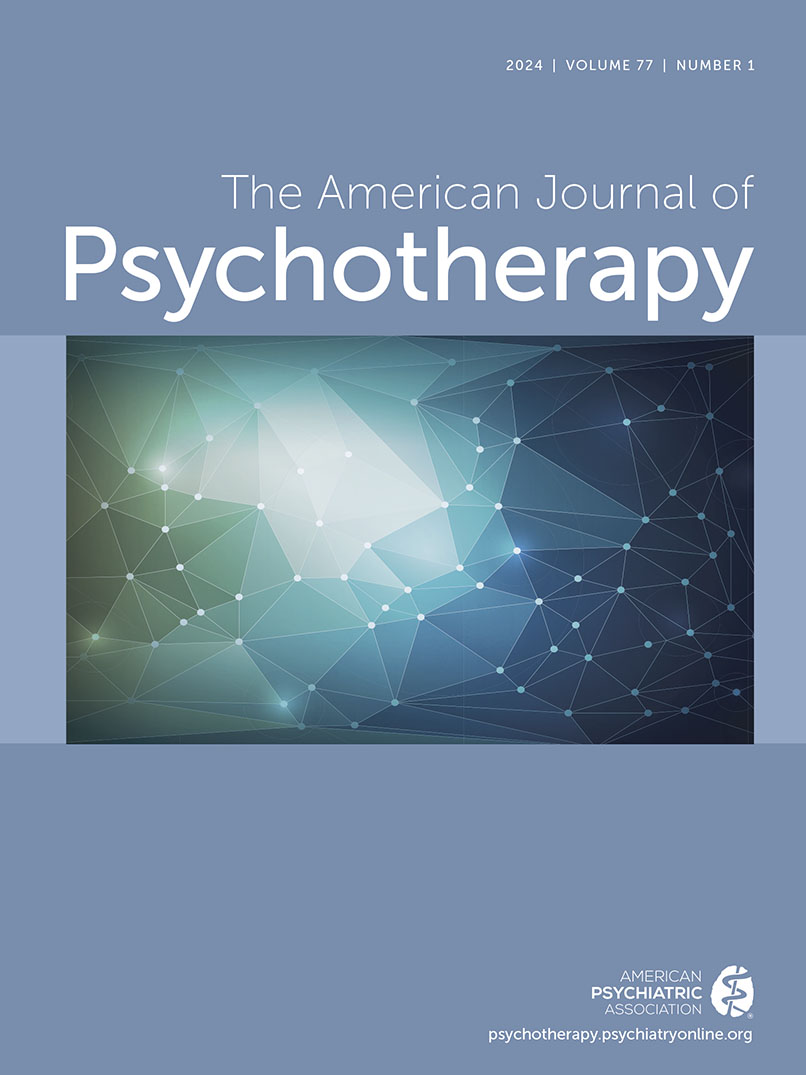American Journal of Psychotherapy
- Volume 46
- Number 1
- January 1992
Editorial
Articles
Publication date: 01 January 1992
Pages9–22This selective review of recent clinical research on neurotic depressive and dysthymic disorders observed in psychiatric settings reveals that, far from being “minor,” they typically begin early in life against a familial background loaded with mood ...
https://doi.org/10.1176/appi.psychotherapy.1992.46.1.9Publication date: 01 January 1992
Pages23–36While not as extensively studied as major depression, several pharmacologic studies of patients with variously diagnosed minor depression confirm response rates similar to those found for patients with major depression. We conclude that standard trials of ...
https://doi.org/10.1176/appi.psychotherapy.1992.46.1.23Publication date: 01 January 1992
Pages37–49This paper proposes a developmentalist metatheory for the psychotherapy of depressed patients. Four prototypes of depressive disorder based on psychosexual maturation—dyadic deficit depression (DDD), dyadic conflict depression (DCD), triadic deficit ...
https://doi.org/10.1176/appi.psychotherapy.1992.46.1.37Publication date: 01 January 1992
Pages50–57Some overall diagnostic and therapeutic advantages of focusing on patients’ behaviors, affective processes, sensations, images, cognitions, interpersonal relationships, and drugs/biological factors are outlined. The virtues of using this broad-based ...
https://doi.org/10.1176/appi.psychotherapy.1992.46.1.50Publication date: 01 January 1992
Pages58–74Treatment studies of subgroups of patients with minor depression are reviewed. These include studies of dysthymia, neurotic, characterological depression, “double depression,” and follow-up studies of long-term treatment. Problems due to the ambiguity of ...
https://doi.org/10.1176/appi.psychotherapy.1992.46.1.58Publication date: 01 January 1992
Pages75–90This paper distinguishes between self-analysis (the classical psychoanalytic approach to the search for deep insight) and self-processing (the equivalent effort as based on principles drawn from the communicative approach). The structure and transactions ...
https://doi.org/10.1176/appi.psychotherapy.1992.46.1.75Publication date: 01 January 1992
Pages91–101In a retrospective pilot study, 88 outpatients were videotaped during therapy and encouraged to watch the tape at home. Seventy-three (83%) reported video homework was helpful to the therapeutic process. Success of therapy according to video-group self-...
https://doi.org/10.1176/appi.psychotherapy.1992.46.1.91Publication date: 01 January 1992
Pages102–110Research suggests that in many conditions combined treatment with psychotherapy and medications may be more effective than either alone, although either modality by itself benefits many patients. Based on the extensive literature, this paper addresses the ...
https://doi.org/10.1176/appi.psychotherapy.1992.46.1.102Publication date: 01 January 1992
Pages111–130In the present theoretically skeptical era, a need is felt for criteria to evaluate therapeutic constructs. However, all absolute criteria seem to be accepted only by adherents of the approach that endorses them. We propose that in our pluralistic era, a ...
https://doi.org/10.1176/appi.psychotherapy.1992.46.1.111Publication date: 01 January 1992
Pages131–140Definitions of psychological-mindedness are reviewed and critiqued, and a new model presented. Though the construct has broad applications for psychotherapy issues, definitions appearing in the literature have inconsistently specified the components of ...
https://doi.org/10.1176/appi.psychotherapy.1992.46.1.131Book Review
Publication date: 01 January 1992
Pages141–142https://doi.org/10.1176/appi.psychotherapy.1992.46.1.141Publication date: 01 January 1992
Pages142–143https://doi.org/10.1176/appi.psychotherapy.1992.46.1.142Publication date: 01 January 1992
Pages143–144https://doi.org/10.1176/appi.psychotherapy.1992.46.1.143Publication date: 01 January 1992
Pages144–146https://doi.org/10.1176/appi.psychotherapy.1992.46.1.144Publication date: 01 January 1992
Pages146–147https://doi.org/10.1176/appi.psychotherapy.1992.46.1.146Publication date: 01 January 1992
Pages147–148https://doi.org/10.1176/appi.psychotherapy.1992.46.1.147Publication date: 01 January 1992
Pages148–149https://doi.org/10.1176/appi.psychotherapy.1992.46.1.148Publication date: 01 January 1992
Pages149–150https://doi.org/10.1176/appi.psychotherapy.1992.46.1.149Publication date: 01 January 1992
Pages150–151https://doi.org/10.1176/appi.psychotherapy.1992.46.1.150Publication date: 01 January 1992
Pages152–153https://doi.org/10.1176/appi.psychotherapy.1992.46.1.152Abstracts
Publication date: 01 January 1992
Pages156–158https://doi.org/10.1176/appi.psychotherapy.1992.46.1.156Past Issues
View Issues Archive
Vol. 77 | No. 4

Vol. 77 | No. 3

Vol. 77 | No. 2
